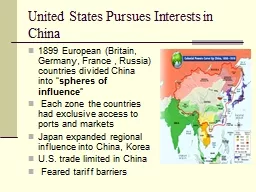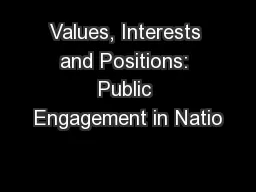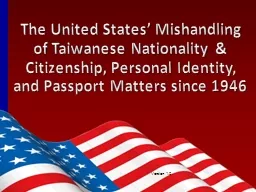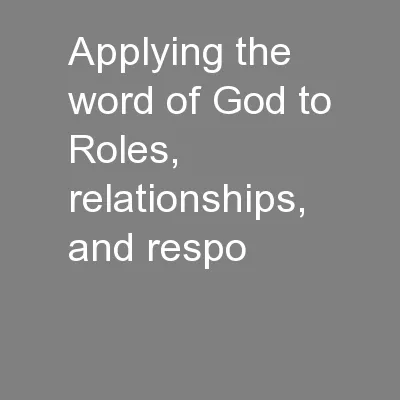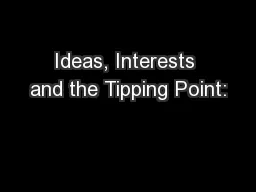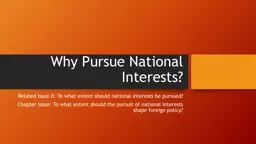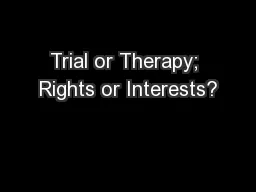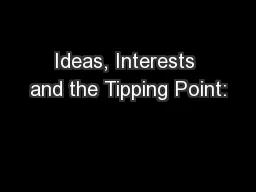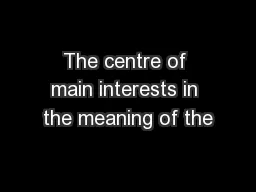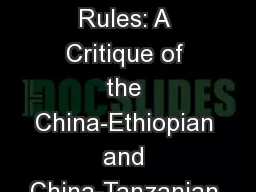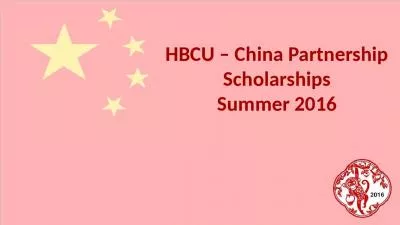PPT-United States Pursues Interests in China
Author : kittie-lecroy | Published Date : 2016-06-25
1899 European Britain Germany France Russia countries divided China into spheres of influence Each zone the countries had exclusive access to ports and markets
Presentation Embed Code
Download Presentation
Download Presentation The PPT/PDF document "United States Pursues Interests in China" is the property of its rightful owner. Permission is granted to download and print the materials on this website for personal, non-commercial use only, and to display it on your personal computer provided you do not modify the materials and that you retain all copyright notices contained in the materials. By downloading content from our website, you accept the terms of this agreement.
United States Pursues Interests in China: Transcript
Download Rules Of Document
"United States Pursues Interests in China"The content belongs to its owner. You may download and print it for personal use, without modification, and keep all copyright notices. By downloading, you agree to these terms.
Related Documents

